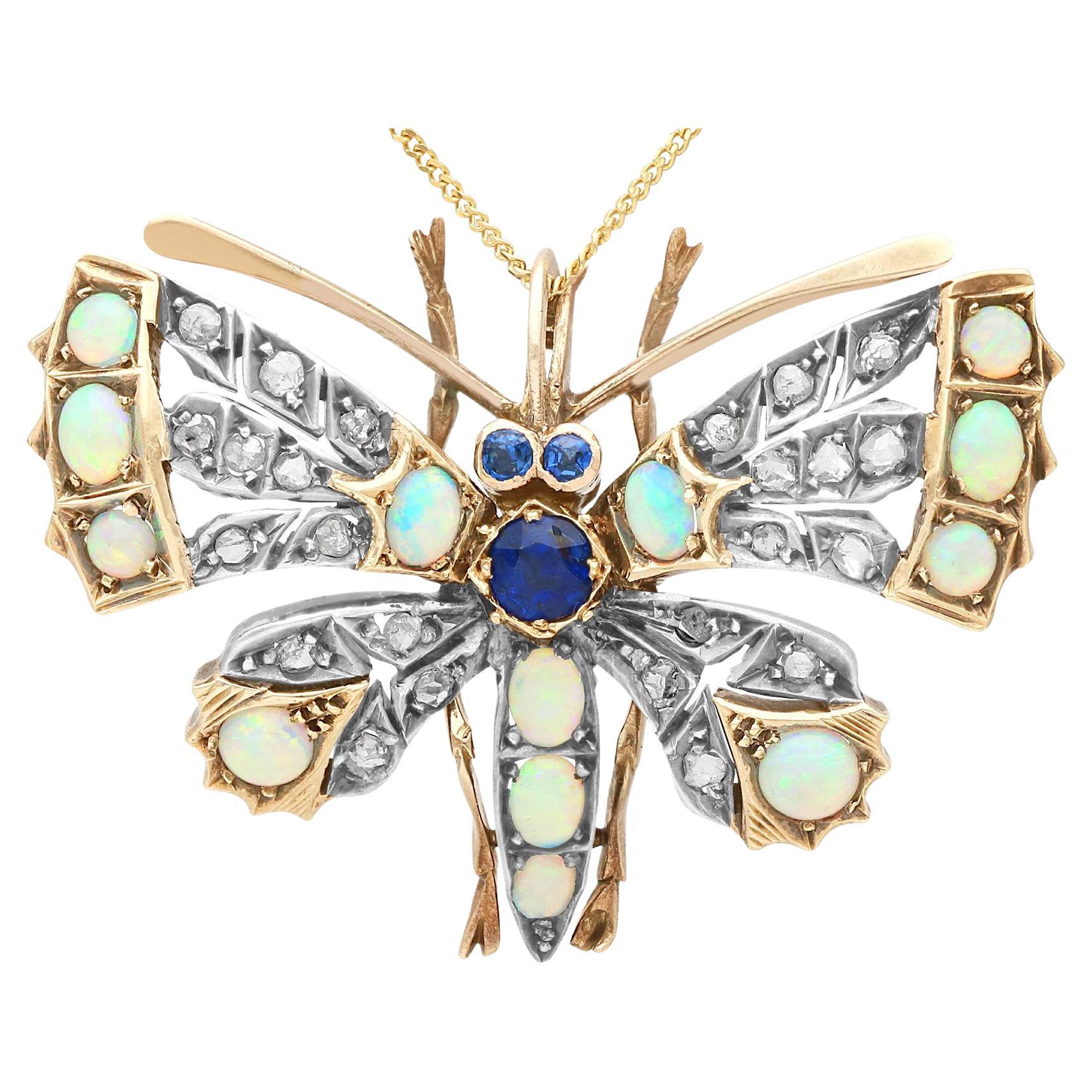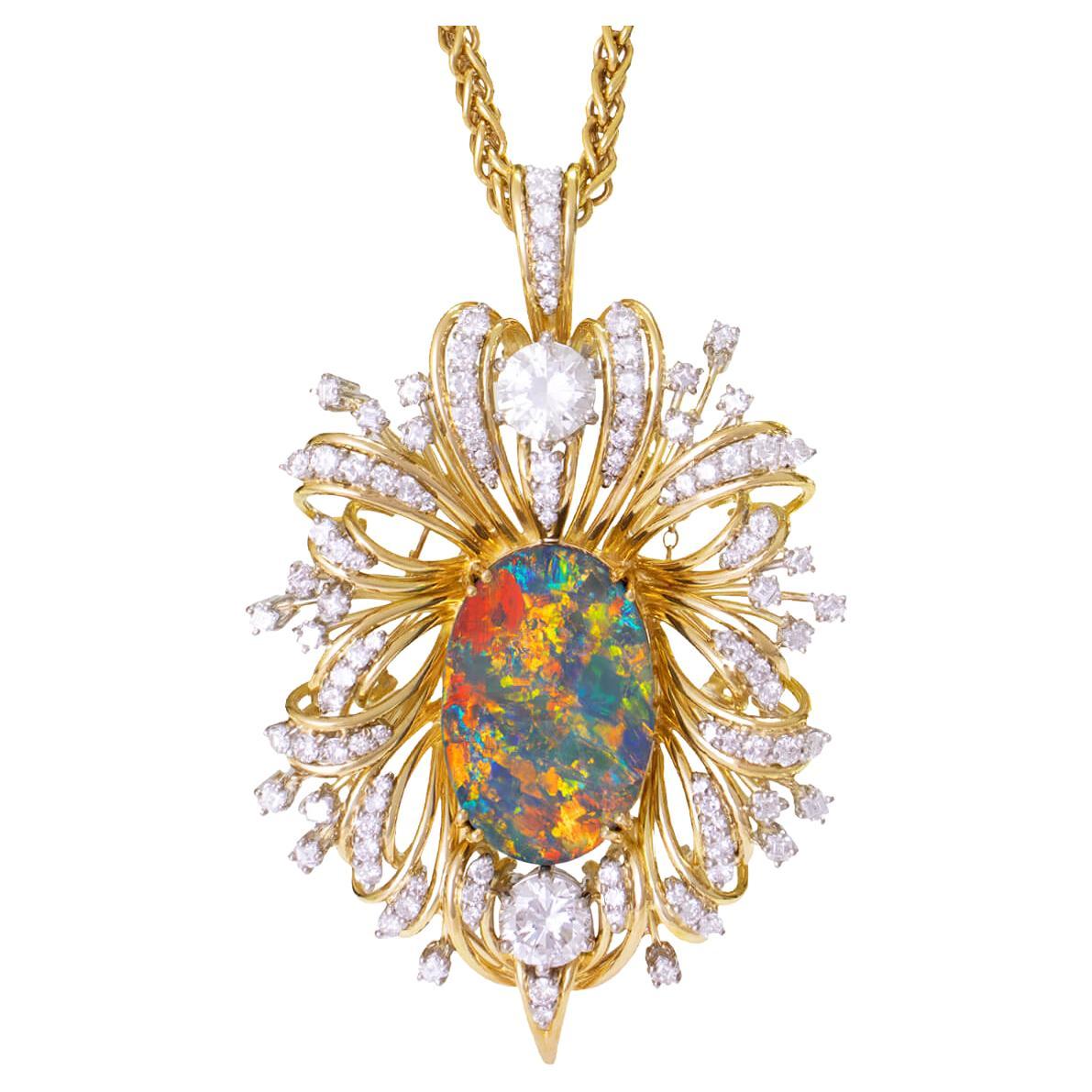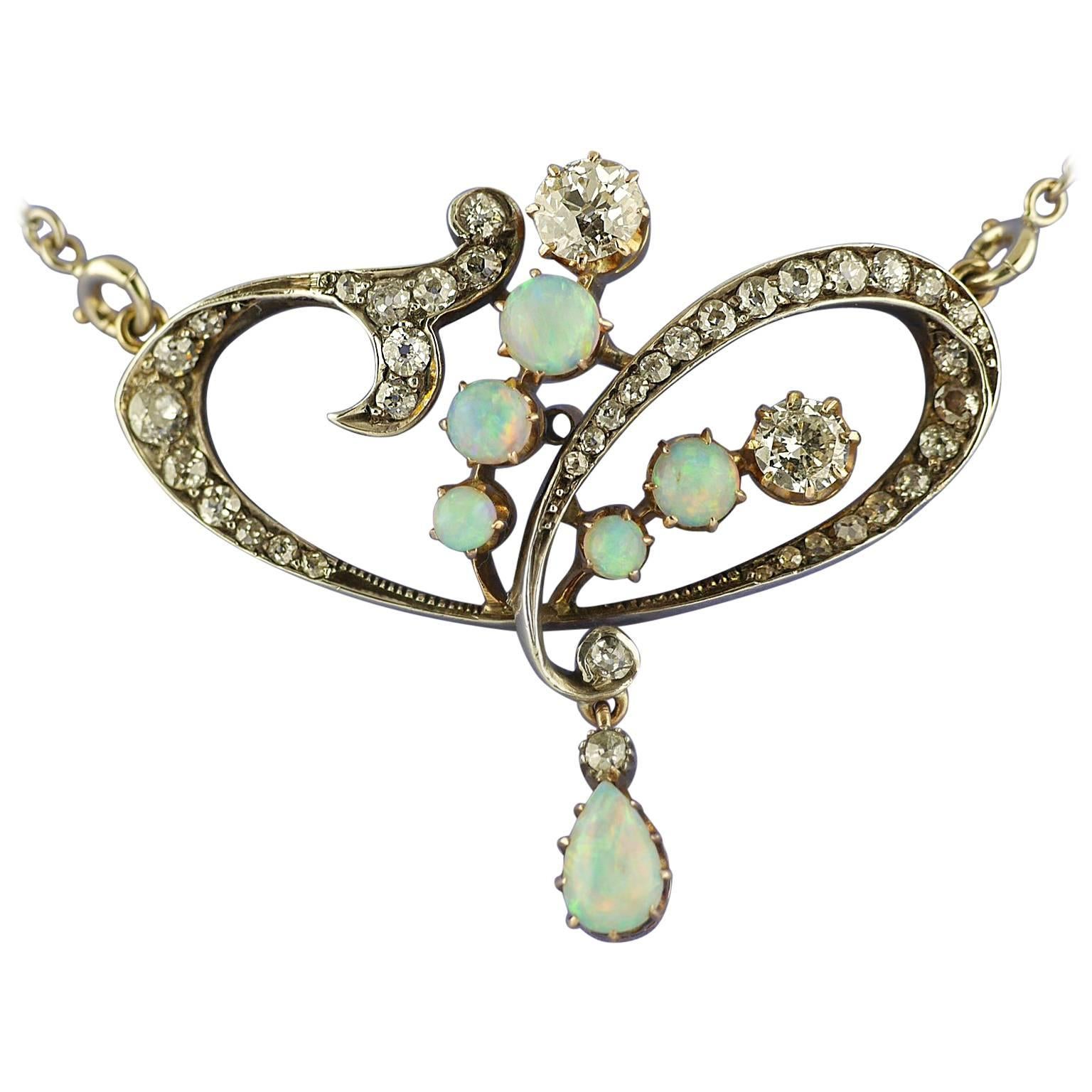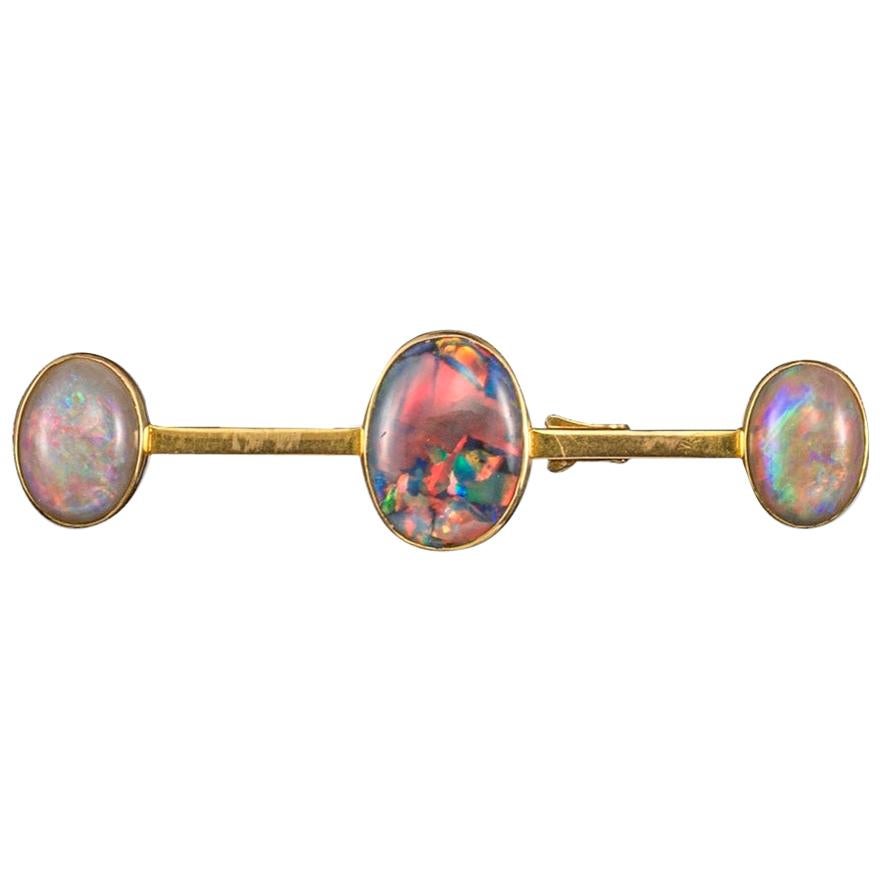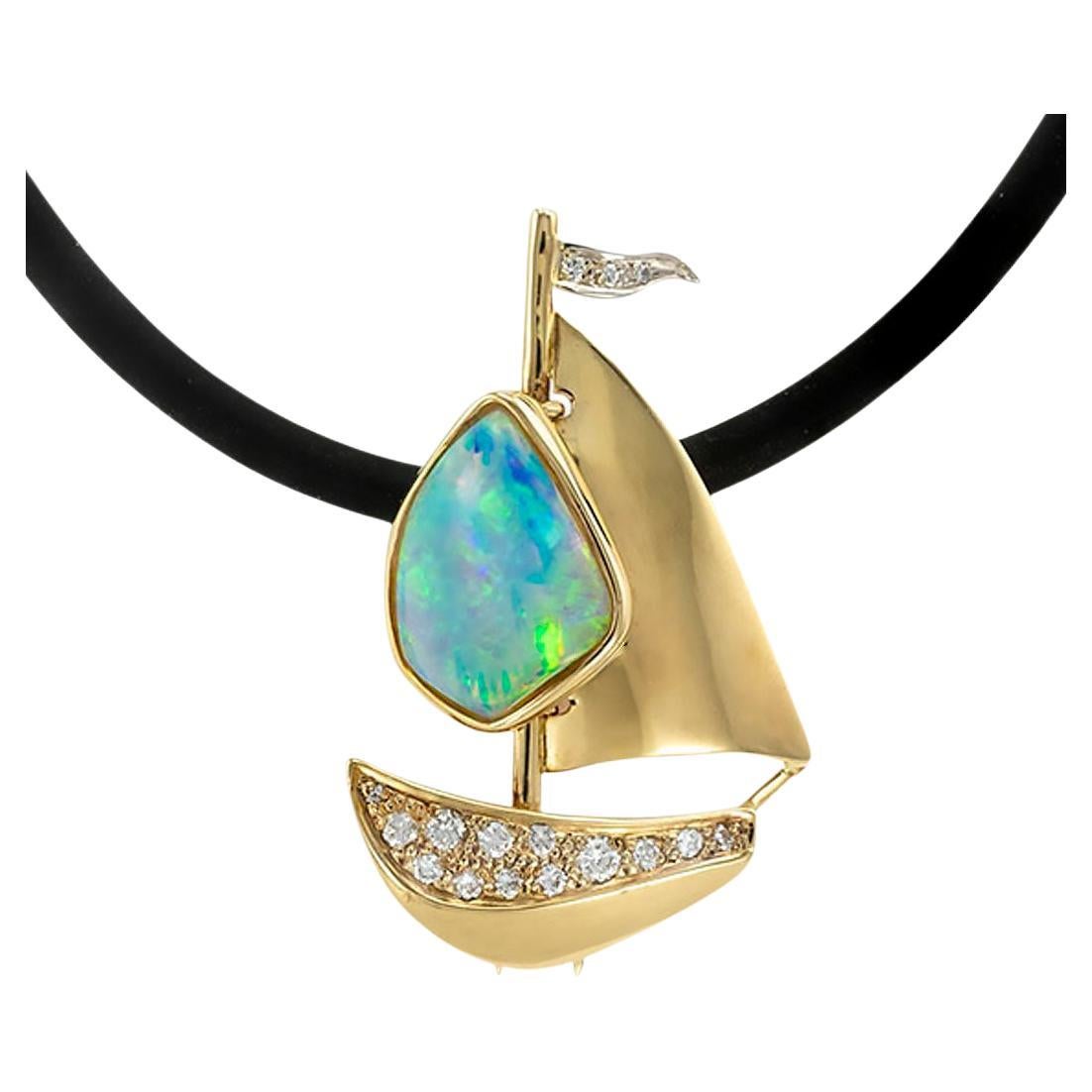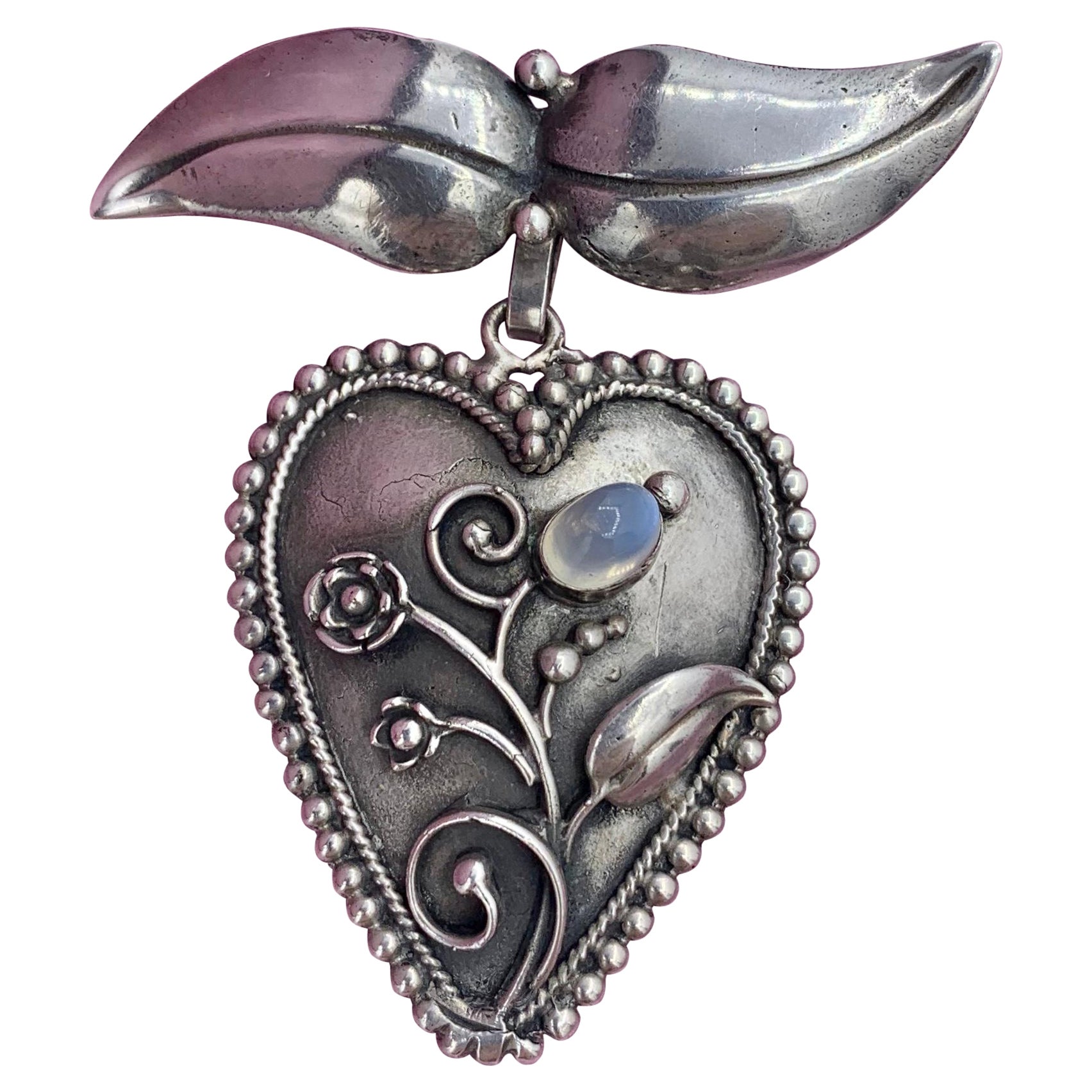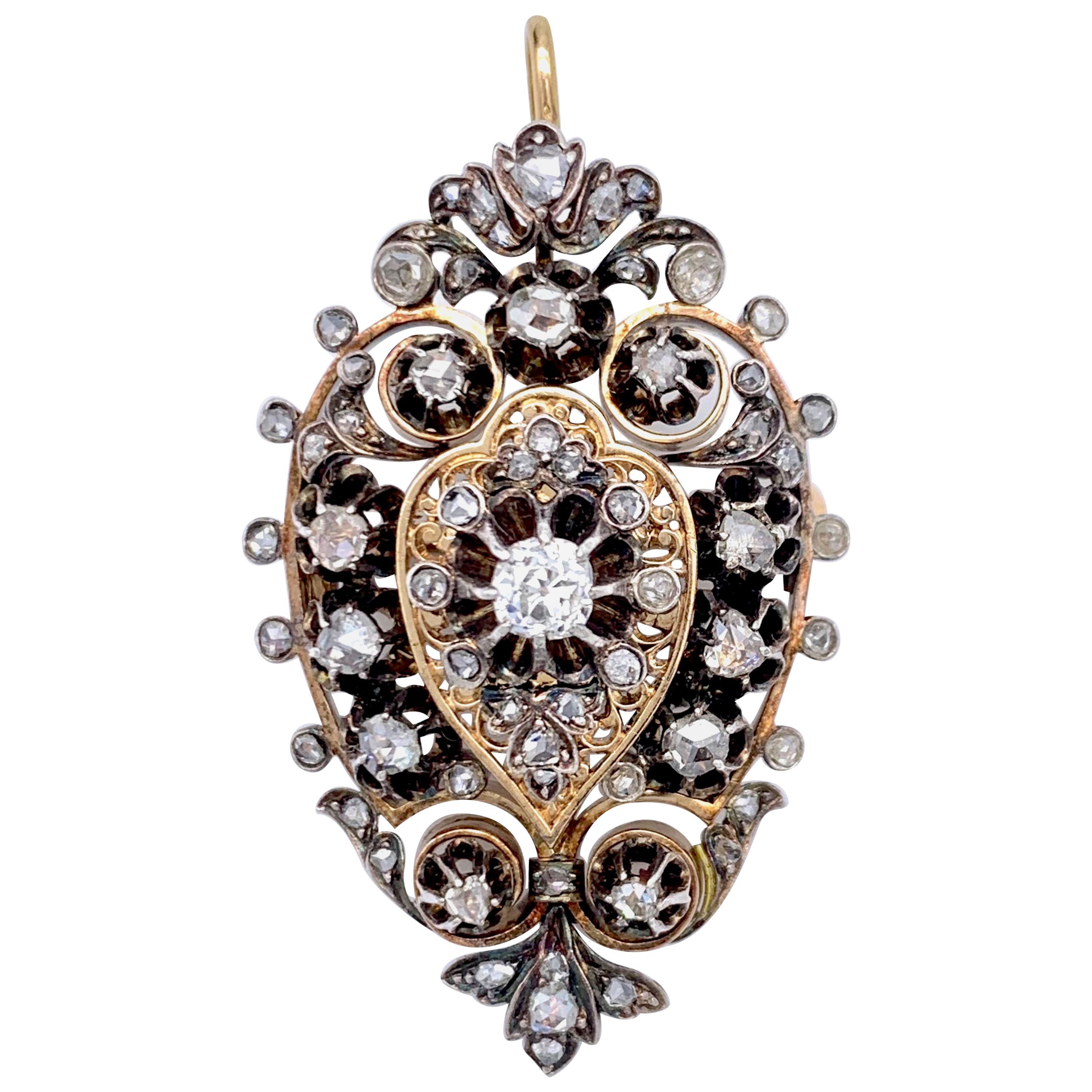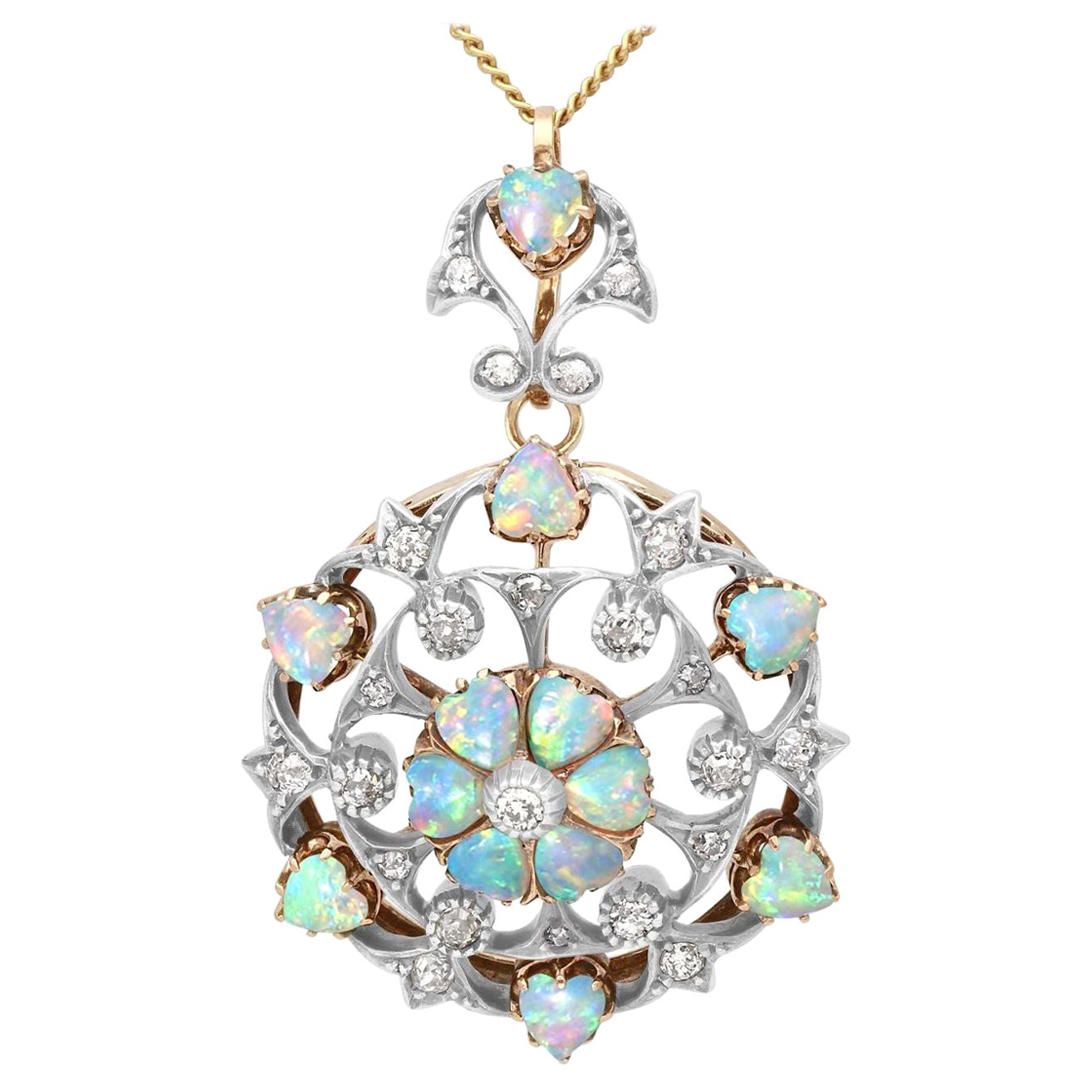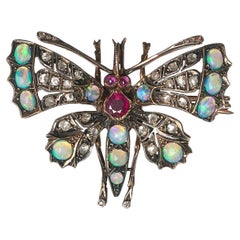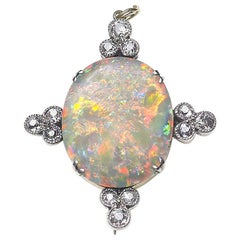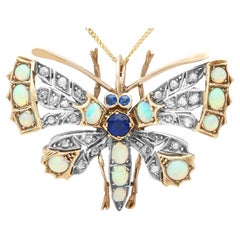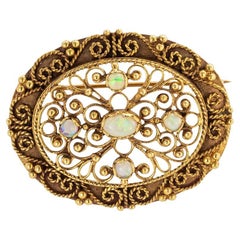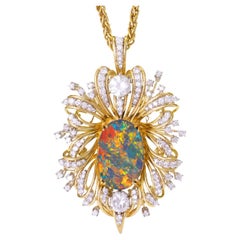
Antique Opal Heart Brooch Pendant
View Similar Items
Want more images or videos?
Request additional images or videos from the seller
1 of 2
Antique Opal Heart Brooch Pendant
About the Item
- Metal:Gold,Silver
- Stone:Diamond,Opal
- Weight:8 g
- Dimensions:Width: 28 in (711.2 mm)Length: 40 in (1,016 mm)
- Style:Late Victorian
- Place of Origin:United Kingdom
- Period:1890-1899
- Date of Manufacture:Circa 1890
- Condition:Wear consistent with age and use.
- Seller Location:London, GB
- Reference Number:Seller: BA-5461stDibs: LU38923008773
About the Seller
4.9
Recognized Seller
These prestigious sellers are industry leaders and represent the highest echelon for item quality and design.
Gold Seller
These expertly vetted sellers are highly rated and consistently exceed customer expectations.
Established in 1970
1stDibs seller since 2015
117 sales on 1stDibs
Typical response time: 5 hours
More From This SellerView All
- Antique Amethyst, Diamond, Silver And Gold Pendant Brooch, Circa 1890Located in London, GBAn antique, amethyst and diamond, flower cluster brooch-cum-pendant, set with a central old-cut diamond, in cut-down settings, with six, fancy, pear shaped amethysts, forming petals,...Category
Antique 1890s British Victorian Pendant Necklaces
MaterialsAmethyst, Diamond, Gold, Silver
- Antique Opal, Ruby and Diamond Butterfly Brooch, Circa 1890Located in London, GBAn antique opal, ruby and diamond butterfly brooch, with opals set in the wings and abdomen, a faceted ruby set in the thorax, cabochon rubies set in the eyes and rose-cut diamonds s...Category
Antique 1890s British Victorian Brooches
MaterialsDiamond, Opal, Ruby, Gold, Silver
- Antique Opal and Diamond Brooch, Silver Upon Gold, Circa 1900Located in London, GBAn antique opal and diamond brooch, with a claw set buff top cut opal, with predominantly red play of colour, mounted in gold, with silver claws, with four groups of three old-cut di...Category
Antique Early 1900s British Late Victorian Brooches
MaterialsDiamond, Opal, Gold, Silver
- Antique Ruby, Diamond, Pearl Luckenbooth Heart Crown Circle Brooch, Circa 1910Located in London, GBAn early 20th century, Luckenbooth double witch's heart brooch, with one heart set with Burma rubies and the other set with old-cut diamonds, in grain settings, surmounted with a coronet, set with three, natural seed pearls, above a row of old-cut diamonds, in grain settings, with a knife edge circular surround, set with alternating rubies and old-cut diamonds, in claw settings, mounted in 14ct gold, with the grain set diamonds in silver-upon-gold. American, circa 1910. Luckenbooth brooches are traditional Scottish love tokens. They are usually a heart shaped brooch, often with a crown or coronet above one heart, or two intertwined hearts, with similar motifs to the Claddagh ring. European Heart-shaped brooches date back to late medieval period but this design probably did not appear in Scotland before the 17th century. It became very popular in the 19th century, featuring in the ranges of Scottish manufacturing jewellers, for the Highland outfitter and tourist trades. They are typically made of silver, although gold heart brooches were made for wealthy people and may be engraved or set with stones. The name comes from the Luckenbooths of Edinburgh. Luckenbooth is a Scots word for a lockable stall or workshop. Originating in the 15th century, they were the city's first permanent shops, situated on the Royal Mile near St. Giles Cathedral. Initially housing mainly silversmiths and goldsmiths. They were demolished in 1817. The brooches were often given as a betrothal or wedding gift. It might have been worn as a charm, by a nursing mother to help her milk flow or be pinned to a baby’s clothing. It was also known as a witch-brooch to protect children from evil. By the mid-18th century, Luckenbooth tokens featured heavily as trade silver...Category
Vintage 1910s American Edwardian Brooches
MaterialsDiamond, Pearl, Ruby, 14k Gold, Silver
- Antique Fabergé Dendritic Agate Diamond Gold and Silver Heart Brooch, Circa 1915By FabergéLocated in London, GBA Fabergé dendritic agate and diamond heart shape brooch, with a heart shape dendritic agate, with inclusions suggesting trees, in a rub over settin...Category
Vintage 1910s Russian Belle Époque Brooches
MaterialsAgate, Diamond, 14k Gold, Silver
$19,069Free Shipping - Vintage Tiffany & Co. Gem Set Pearl and Gold Pendant Brooch, circa 1937By Tiffany & Co.Located in London, GBA vintage, Tiffany & Co., gem set, diamond and pearl floral circle pendant-brooch, with four clusters of three pearls, and four gem set flowers or clover leaves, each flower set with...Category
Vintage 1930s American Retro Brooches
MaterialsAmethyst, Diamond, Pearl, Peridot, Sapphire, 14k Gold
You May Also Like
- Antique Opal Diamond Sapphire Silver Set Butterfly Pendant/Brooch Circa 1880Located in Jesmond, Newcastle Upon TyneA stunning, fine and impressive antique 1.91 Carat opal, 0.88 Carat diamond and 0.54 Carat sapphire, silver set butterfly brooch; part of our antique jewelry and estate jewelry collections. This stunning, fine and impressive antique pendant/brooch has been crafted in yellow metal and silver. The pendant brooch has been modelled in the form of a butterfly. The pierced decorated forewings are embellished with three cabochon cut opals to the outer margins. The shaped basal's of the forewings, and shaped sub margins of the hindwings are ornamented with further individually set cabochon cut opals. The pierced decorated wings are embellished with a total of twenty-four diamonds, in a combination of mine and Dutch cuts. The butterfly's thorax is accented with a claw set round faceted cut sapphire, surmounted with two further sapphires representing the eyes. The abdomen displays three impressive claw set cabochon cut opals, graduating in size. The pendant suspends from a contemporary 18k yellow gold 18" curb chain via an integrated ring loop, securing to the reverse with a conventional spring-loaded bolt ring. This versatile pendant may also be worn as a brooch, via a detachable hinged pin and C shaped clasp fastening to the reverse of the setting. This impressive antique butterfly pendant has been independently tested using state of the art technology (Niton XL2 Analyzer) and verified as silver. This stunning Victorian brooch is supplied with an independent diamond and gemstone grading report card. This combination of gemstones is rare for this style of brooch; this, in addition to the detachable brooch fitment, indicates the high quality of the piece. Images do not always reflect the true color and brilliance of gemstones and diamonds. The video however provides a truer representation of the actual color and showcases each stone. Condition This impressive butterfly brooch is excellent quality, with impressive opals displaying a scintillating play of color. The impressive sapphires display a fine color, brilliance, and presence. The well color matched diamonds display a fine white color and brilliance. This type of brooch / pendant has a classic antique appearance, and as such cannot be brightened. The brooch is an excellent gauge of silver and is in excellent condition. Reflections in photographs may detract from the true representation of this impressive Victorian butterfly brooch...Category
Antique 1880s Unknown Pendant Necklaces
MaterialsDiamond, Opal, Sapphire, Silver
- Vintage Opal Yellow Gold Brooch PendantLocated in Los Angeles, CAVintage opal and yellow gold brooch pendant circa 1950. * ABOUT THIS ITEM: #P5004. Scroll down for specifications. This versatile brooch pendant is des...Category
Vintage 1950s Modern Brooches
MaterialsOpal, 14k Gold, Yellow Gold
- 'Opal Blossom' Antique 17.7ct Black Opal & 8.03ct Diamond Pendant and BroochLocated in MAIN BEACH, QLDA truly timeless piece, the Opal Blossom, was created in the 1930s. This spectacular piece is a pendant and also a brooch. Centred with a heart of 17.7ct black opal and set in an 18K gold and palladium Chrysanthemum setting featuring over 8ct of diamonds, it is a true heirloom piece fit for royalty.Category
Vintage 1930s Australian Pendant Necklaces
MaterialsDiamond, Opal, Black Opal, 18k Gold, Palladium
- Art Nouveau Diamond Opal Pendant/Brooch, circa 1900Located in London, GB18ct gold & silver set Art Nouveau Diamond Opal Pendant/Brooch dated circa 1900 Five round opals with an articulated pear shaped opal drop, very well matched with lively play of colours and iridescence in reds, greens, blues and gold. Set in 18 carat yellow gold claw collets Two main transitional cut (old mine) diamonds 0.70ct. Mix of old mine and rose cut diamonds in an 18 carat yellow gold with “silver Set” channel setting , approx 1 ct total. G/H/I, VS2-SI2. Total diamond weight: approx 1.7carats Setting diamonds in gold with a thin layer of silver, “silver set”, was a technique used in the Georgian/Victorian/Art Nouveau period as white coloured gold and platinum were not yet available. A very thin layer of silver was applied to the gold, on which the diamonds were set, to show them off to their best advantage (as the yellow would reflect and distort the white colour of the diamonds). The Art Nouveau period was a short lived but worldwide movement which reached its peak at the end of the 19th Century and the first decade of the 20th Century. It had its roots in the Pre Raphaelite and Arts and Crafts movements in Britain in the 1860’s. Artists, such as William Morris, took their inspiration from the flora and fauna of nature and rejected the mass industrialisation and mechanisation of the Victorian age. Art Nouveau continued with this theme and has a distinctive appearance with soft, curved shapes and lines and often depicted natural designs such as flowers, birds and the female form. Before the Art Nouveau period, the emphasis had been to design pieces with an emphasis on gem stones, diamonds, rubies emeralds etc. However, during the Art Nouveau period, jewellers adopted the idea of using other semi–precious stones “from nature” such as agate, garnet opal, moonstone, aquamarine and experimented with a wide variety of new techniques e.g. enamelling. The “New Art” style became a worldwide movement encompassing all disciplines of the arts, and world class artists as far afield as Gaudi with his “modernisme” architecture in Spain, Louis Comfort Tiffany in New York with objects, Galle Glass in France and the Liberty & Co Archibald Knox designs in Britain, Jugendstil in Northern Europe and Faberge in Russia. The movement flared brightly but briefly and by 1910 it was already going out of style to be replaced by Art Deco. In fitted period box. Detachable 18ct brooch...Category
Antique Early 1900s British Art Nouveau Pendant Necklaces
MaterialsWhite Diamond, Opal, Diamond, 18k Gold, Yellow Gold, Silver
- Art Nouveau Diamond Opal Pendant/Brooch, circa 1900Located in London, GB18ct gold & silver set Art Nouveau Diamond Opal Pendant/Brooch dated circa 1900 Five round opals with an articulated pear shaped opal drop, very well matched with lively play of colours and iridescence in reds, greens, blues and gold. Set in 18 carat yellow gold claw collets Two main transitional cut (old mine) diamonds 0.70ct. Mix of old mine and rose cut diamonds in an 18 carat yellow gold with “silver Set” channel setting , approx 1 ct total. G/H/I, VS2-SI2. Total diamond weight: approx 1.7carats Setting diamonds in gold with a thin layer of silver, “silver set”, was a technique used in the Georgian/Victorian/Art Nouveau period as white coloured gold and platinum were not yet available. A very thin layer of silver was applied to the gold, on which the diamonds were set, to show them off to their best advantage (as the yellow would reflect and distort the white colour of the diamonds). The Art Nouveau period was a short lived but worldwide movement which reached its peak at the end of the 19th Century and the first decade of the 20th Century. It had its roots in the Pre Raphaelite and Arts and Crafts movements in Britain in the 1860’s. Artists, such as William Morris, took their inspiration from the flora and fauna of nature and rejected the mass industrialisation and mechanisation of the Victorian age. Art Nouveau continued with this theme and has a distinctive appearance with soft, curved shapes and lines and often depicted natural designs such as flowers, birds and the female form. Before the Art Nouveau period, the emphasis had been to design pieces with an emphasis on gem stones, diamonds, rubies emeralds etc. However, during the Art Nouveau period, jewellers adopted the idea of using other semi–precious stones “from nature” such as agate, garnet opal, moonstone, aquamarine and experimented with a wide variety of new techniques e.g. enamelling. The “New Art” style became a worldwide movement encompassing all disciplines of the arts, and world class artists as far afield as Gaudi with his “modernisme” architecture in Spain, Louis Comfort Tiffany in New York with objects, Galle Glass in France and the Liberty & Co Archibald Knox designs in Britain, Jugendstil in Northern Europe and Faberge in Russia. The movement flared brightly but briefly and by 1910 it was already going out of style to be replaced by Art Deco. Detachable 18ct brooch...Category
Antique Early 1900s British Art Nouveau Pendant Necklaces
MaterialsDiamond, White Diamond, Opal, 18k Gold, Yellow Gold, Silver
- Antique Edwardian 5 Carat Australian Black Opal Brooch Pendant Yellow Gold 1900sLocated in Lisbon, PTAntique Edwardian Australian Lightning Ridge Harlequin Precious Black Opal and White Opal Brooch / Pendant in 18 Karat Yellow Gold, early 190...Category
Antique Early 1900s English Edwardian Brooches
MaterialsOpal, Black Opal, 18k Gold, Yellow Gold, Gold
$32,214Free Shipping
Recently Viewed
View AllMore Ways To Browse
Opal Diamond Brooch Pendant
Antique Heart Pendant Rose
Silver Opal Brooch
Victorian Opal Heart
Victorian Opal Diamond Pendant
Antique Silver Heart Jewelry Box
Opal Heart Antique
Enamel Jewelry Cartier
Vintage Brooch Earring Set
Vintage Costume Brooch
Art Green Brooch
Vintage Pin 14k
Diamond Safety Pin
Tiffany Mid Century Jewelry
Retro Art Deco Brooch
Antique Jewel Brooches
Royal Brooch
18 Karat Brooch With Pearls
